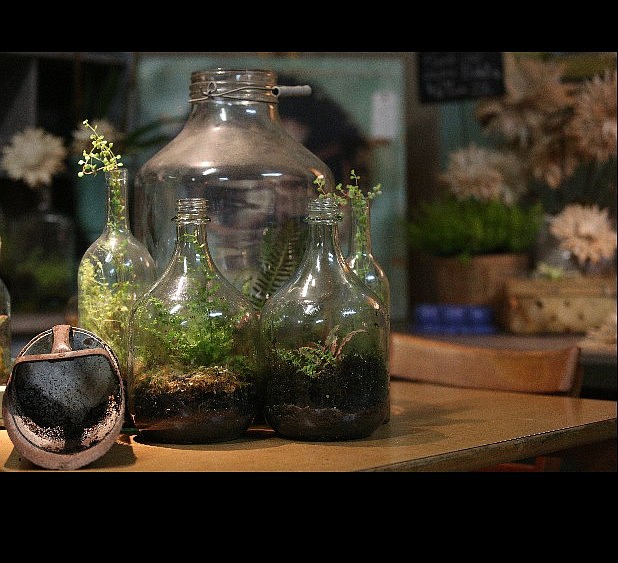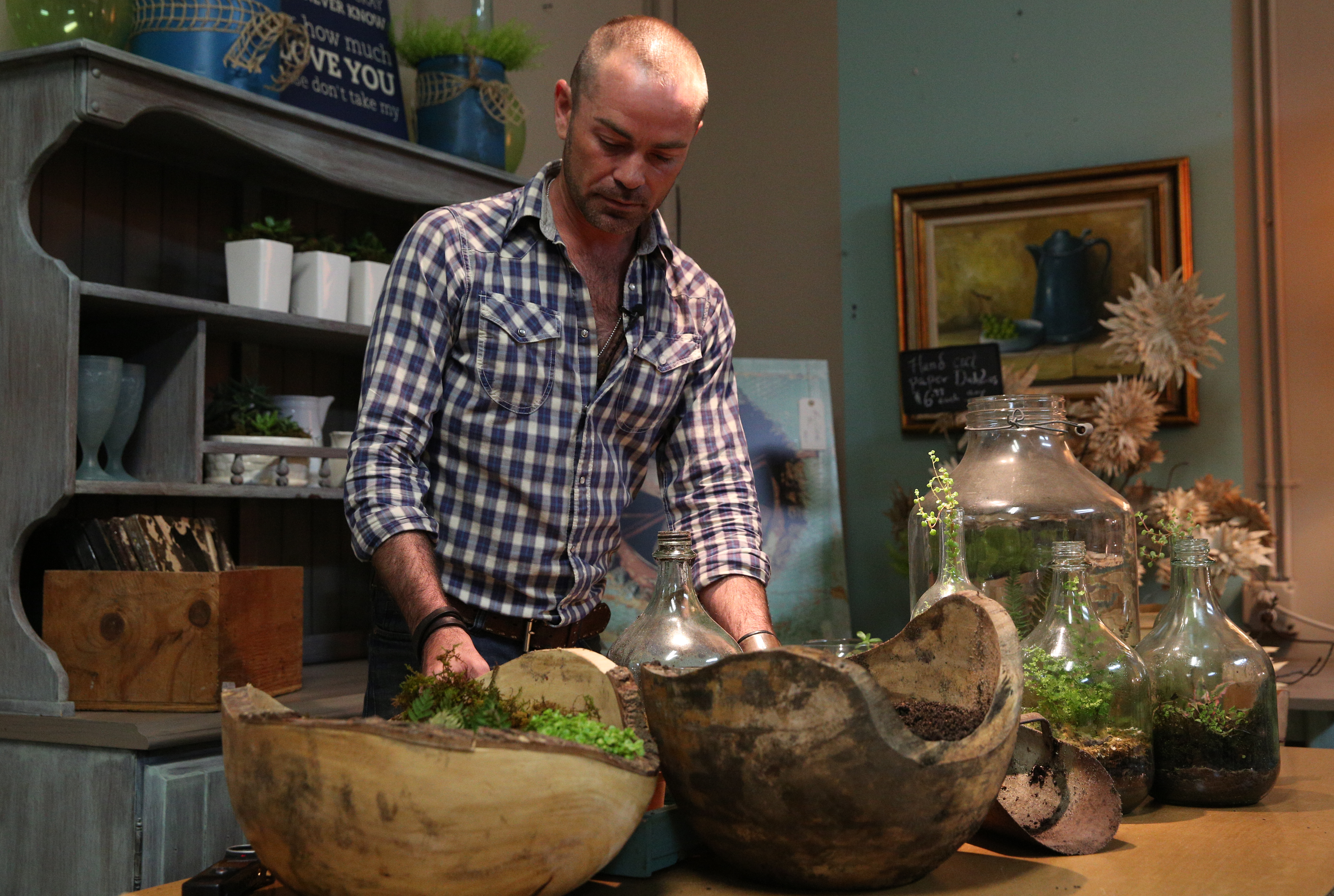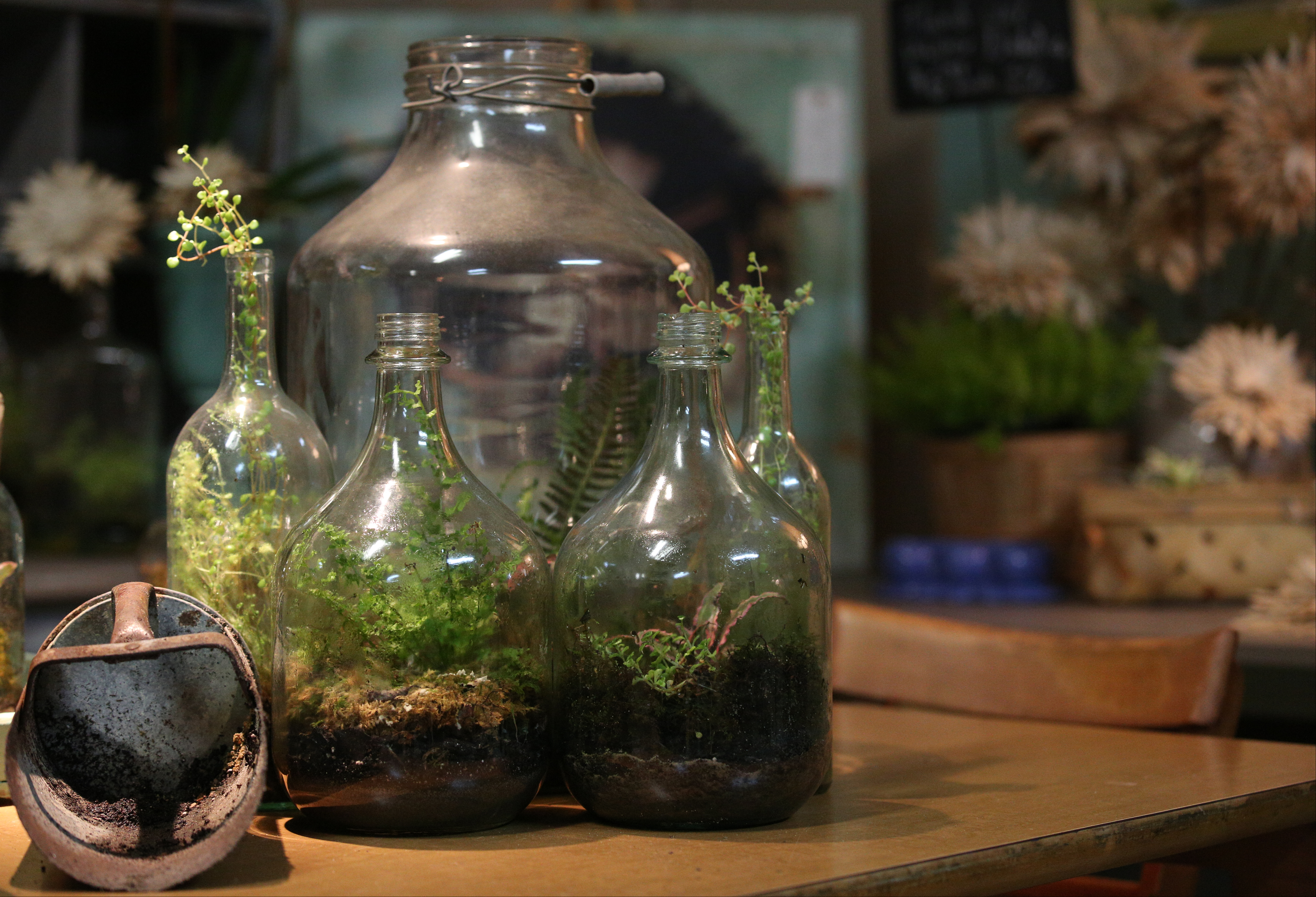TERRARIUM WORKSHOPS* Company: Endurance Designs.* When: 1-2:30 p.m. Sunday, April 27.* Where: Merchants on Main, 607 E. Main St.* Cost: $30, includes soil and plants to create up to three terrariums in three student-provided bottles.* Phone: 521-6285.* Website: www.merchantsonmain.co.* Company: Planted Pots.* When: 6-7:30 p.m. Tuesday, April 22.* Where: Chattanooga Workspace, 302 W. Sixth St.* Cost: $25, includes jar, planting material, two small succulents and reindeer moss.* Phone: 463-0338.* Website: www.plantedpots.com.
WORLD BUILDING 101Horticulturalist Aaron Shiver and various websites offer the following quick tips for assembling a terrarium:• Choose your container based on the plants you intend to include. Ferns and some varieties of moss thrive in the humid-rich environment of a bottle with a narrow opening. Plants such as succulents and cacti will prefer the lower humidity of an open container.• Clean the bottle with detergent to sterilize it and to curtail unwanted bacterial or fungal growth.• Depending on the height of the container, lay down one to four inches of pebbles or gravel to allow the water to drain and prevent soil saturation.• Sprinkle on a thin layer of charcoal to filter the water and to help prevent odors.• Add the appropriate soil mixture - potting soil or succulent/cacti soil - in a layer deep enough to suit the plant with the deepest root system that will be included.• While placing your plants, prevent competition for light and water by keeping the terrarium relatively simple and beginning with the largest plants first. Be sure to do any pruning and inspection for fungi, pests and signs of disease before placing them in the container.• Err on the side of caution when it comes watering. Terrariums retain water well, so add water in small amounts to prevent the growth of fungi and only when beads of condensation no longer line the interior of the glass. For open containers, water weekly but in small amounts.
The Bible says God created the world in six days. Even when he stops to explain what he's doing, Aaron Shiver manages the same task - if on a far, far smaller scale - in about 10 minutes.
A horticulturalist, Shiver builds terrariums, carefully balanced worlds of plants housed inside glass bottles or other containers. After a boom of interest in terrariums during the '70s, local horticulturalists say they have been gaining in popularity for about five years, especially among casual gardeners who want to add a bit of quirky, low-fuss floral decoration to their homes.
A self-described "hardcore gardener," even Shiver, 36, admits to occasionally forgetting to water a plant. Most flora would wilt from a lack of attention, he says, but a terrarium is like a little leafy clockwork kingdom in a jar, self-sufficent and able to survive mistreatment by all but the blackest of thumbs.
"Less maintenance is what it's really about. A terrarium is something that's a little more foolproof, a little more lasting," he says. "You don't have to use fertilizers and chemicals, and you don't have the pest problem you have with other ornamentals.
"They're low-maintenance, forget-about-them kind of plants."
A good terrarium, Shiver explains, starts with a soil blend that suits plants' needs while curtailing their development to keep them from outgrowing their enclosure too quickly. Once complete, the glass walls of Shiver's terrariums will focus light and turn it into a miniature, sweltering greenhouse.
If properly maintained, he says, a terrarium can last up to five years.
That dogged resilience is at the heart of a terrarium's appeal, says Laura Freeman, the 31-year-old owner of Planted Pots, a local succulent arrangement company.
Unlike Shiver's miniature hothouses, Freeman's terrariums are open to the air. The antique, wide-mouthed jars and bowls she uses encourage greater evaporation and consequently lower humidity levels needed by the Pacific Coast succulent and cacti species featured in her designs.
Because moisture can escape, her terrariums require more watering - about a teaspoon per plant every week - but Freeman says they are just as difficult to screw up.
"For people like me who don't have an area to garden or the time to keep a garden, a terrarium is something ... that's more exciting than the usual fern or orchid," she says. "They're easier to keep alive."
For his newest world-in-a-bottle, Shiver uses an even mix of loamy and sandy soil. This combination, he says, mirrors the ground near a stream bed, the natural habitat of the plant species for this terrarium, including moss, a creeping succulent from the stonecrop family and a Brazillian cryptanthus - from the Latin for "hidden flower."
His checkered shirtsleeves rolled up to the elbows, Shiver begins by repeatedly plunging and twisting a cleaned burgundy wine bottle into a nearby wooden bowl filled with the crumbly black soil. He stops when the line of earth reaches about three inches above the neck.
"We make a lot of beef Burgundy around my house because these are the perfect terrarium bottles," he laughs. "This is firsthand recycling."
A terrarium can be made from almost any container, Shiver says, adding that bottles used by local distillery Chattanooga Whiskey work especially well. However, the interior environment can be radically changed based on the size of the opening. The narrow neck of Shiver's burgundy bottle will help retain water much more efficiently than a wide-mouthed container. This will limit evaporation, creating a persistently high humidity level needed by the moisture-loving plants he plans to use.
Because the liquid is so efficiently retained, the terrarium will only need to be watered about once a month, and Shiver adds a couple of handfuls of horticultural charcoal to the soil mixture to filter and purify the water and prevent the growth of harmful fungi.
For the next layer, he tears strips off a carpet of dark-green sheet moss. With dirt-stained fingers, he shoves them through the bottle's narrow neck, then carefully arranges the moss into a bed using a long wooden dowel rod.
Next comes the cryptanthus, an earth star with low-lying layers of rose-tongued leaves. At several inches wide, it looks much too large to fit through the opening, but Shiver says terrarium builders soon learn how resilient plants can be after manhandling them to fit into bottles. Removing the earth star from its pot, he brushes off the dirt surrounding its shallow root system and snaps off a few of the bottom leaves before forcing it - leaves crushing together audibly - through the opening.
Once the star is settled atop the moss bed, Shiver finishes off with a long strip of bright green stonecrop sedum he grows in a repurposed koi pond behind his home in St. Elmo. The many-leaved succulent eventually will grow up the side of the bottle in a long, creeping strip.
For the first few weeks or even a couple of months, the terrarium may look questionable, and some of the plants may struggle or die, Shiver says, but eventually, the plants will adjust to the environment and can be left entirely alone for weeks on end.
"I find it very relaxing," he says. "With other plants, there's a huge investment ... initially. There's a huge pressure not to let it die, so you don't enjoy them so much.
"Killing this," he adds, holding up the plant-filled bottle, "is pretty difficult."
Contact Casey Phillips at cphillips@timesfreepress.com or 423-757-6205. Follow him Twitter at @PhillipsCTFP.



